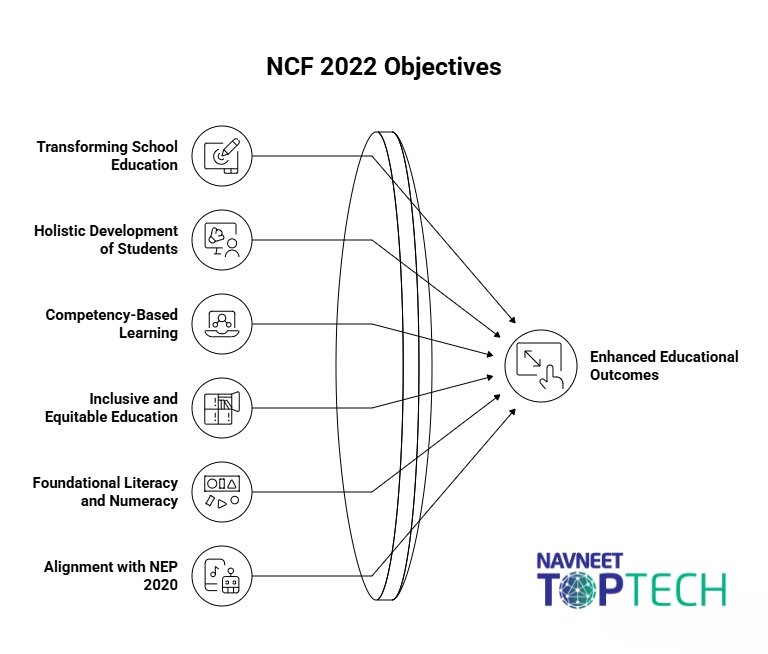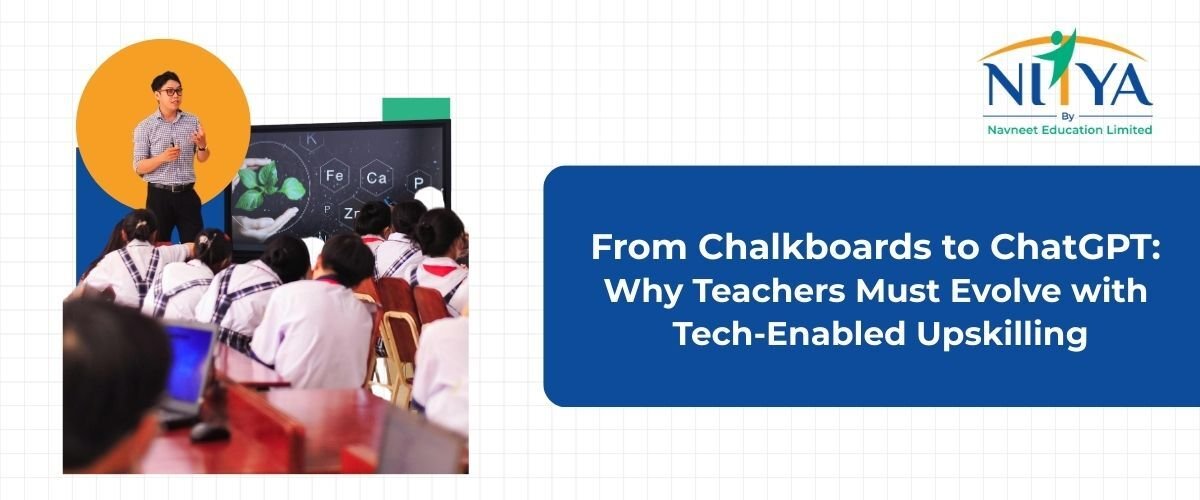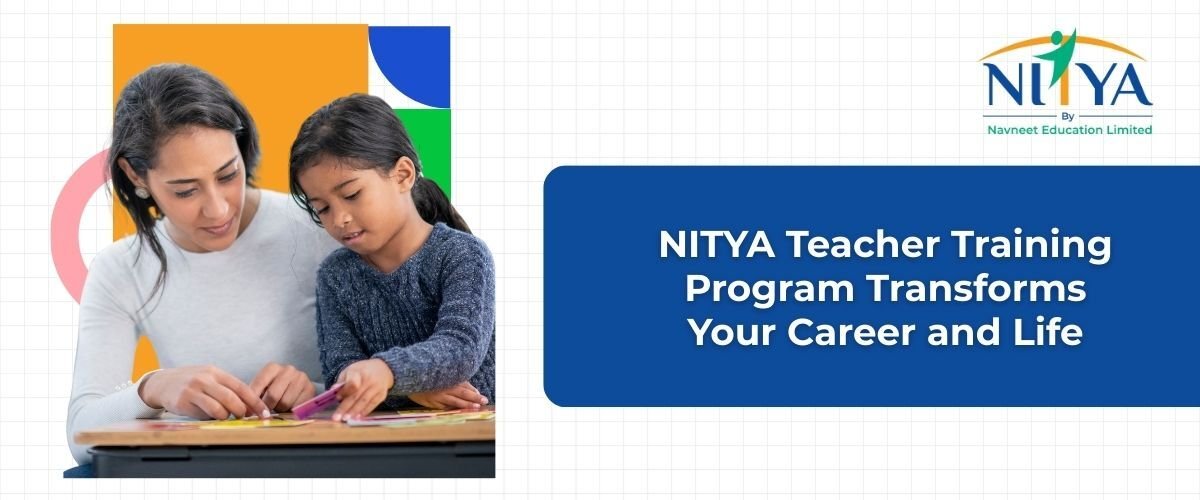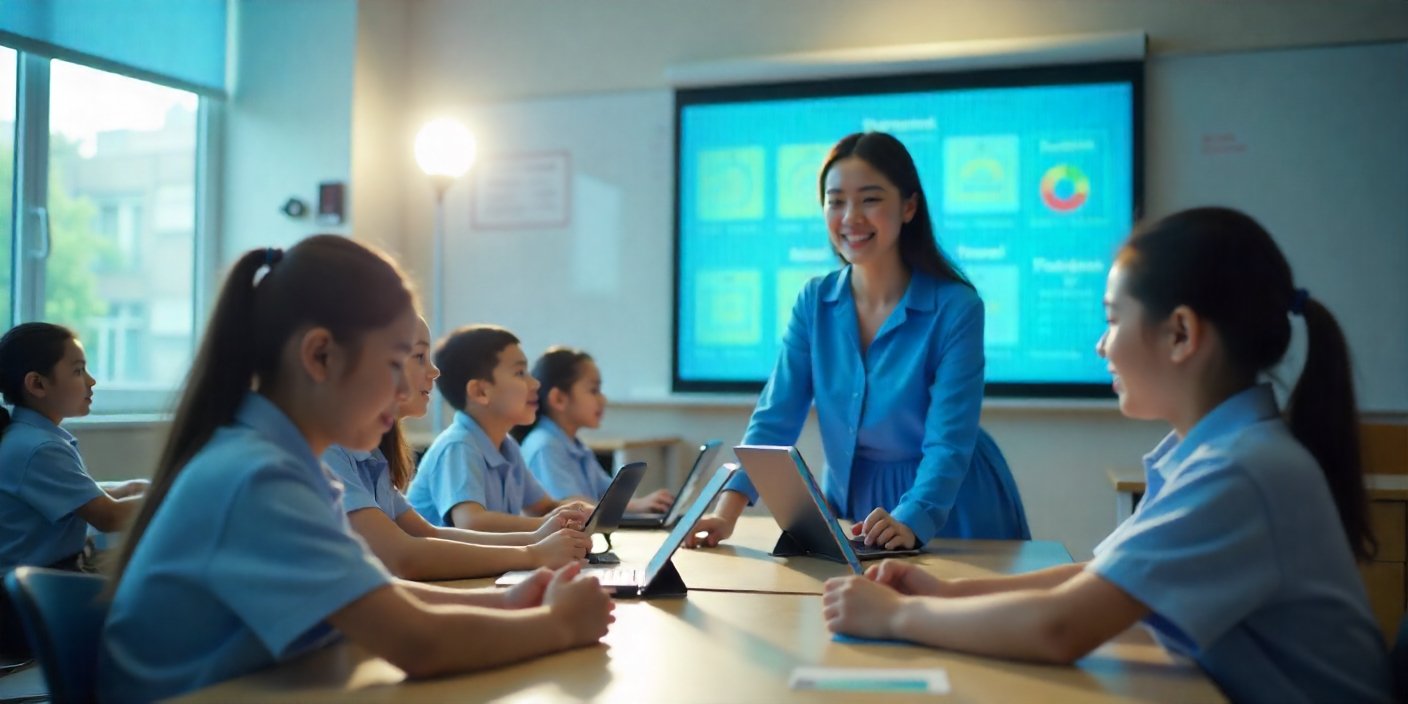India’s education system is at a turning point. India’s education system has long been valued for its strong academic foundation and emphasis on discipline. Yet, as the world evolves, classrooms also need to prepare children for creativity, critical thinking, and holistic growth.
The National Curriculum Framework (NCF) 2022 responds to this shift. It combines the strengths of traditional rigor with new approaches that foster curiosity, emotional intelligence, and future-ready skills, creating a more balanced and inclusive model of learning. It lays down a new foundation for how children should learn, how teachers should teach, and how schools should adapt in today’s fast-changing world.
This blog explores what NCF 2022 is, its main objectives, the key changes it brings to classrooms, the benefits for schools and students, and how NAVNEET TOPTECH is supporting its smooth implementation across India.
NCF 2022 Overview
The National Curriculum Framework has been revised multiple times since 1975, each version aligning education with the needs of its era. But today, with digital disruption, global competition, and new workplace demands, schools need more than incremental change.
NCF 2022, the most comprehensive reform yet, redefines learning for the 21st century, especially in the crucial foundational years. Translating the vision of the National Education Policy (NEP 2020) into practical classroom strategies ensures that education nurtures not just academic performance but also life skills, creativity, and social awareness.
Its purpose is clear: move beyond traditional memory-based learning and deliver education that is experiential, inclusive, and future-ready. For schools, the framework acts as a blueprint to redesign curriculum, pedagogy, and assessments so that learning outcomes go far beyond marksheets.
Main Objectives of NCF 2022

The objectives of NCF 2022 span every dimension of education, from curriculum design to equity and early learning.
1. Transforming School Education
NCF 2022 promotes conceptual understanding over memorization. By using projects, activities, and discussions, schools can create classrooms where students engage deeply with ideas rather than passively absorbing information. This shift helps children apply learning to real-life situations and nurtures curiosity.
2. Holistic Development of Students
The framework emphasizes that education is not just academic. Students must also develop social, emotional, and physical skills. Sports, arts, life skills, and value education are integrated alongside traditional subjects, ensuring balanced growth. This holistic approach prepares children not only for exams but also for life.
3. Competency-Based Learning
Rather than measuring success by the ability to recall facts, NCF 2022 prioritizes skills such as problem-solving, creativity, and critical thinking. Classrooms are designed to help students demonstrate competencies, what they can actually do, instead of just what they can memorize by heart. Digital solutions like NAVNEET TOPTECH complement this approach by offering adaptive assessments and interactive resources that help teachers evaluate competencies in real time and give students opportunities to practice and strengthen these skills.
4. Inclusive and Equitable Education
Access to quality education is at the heart of NCF 2022. It pushes schools to adapt teaching for diverse learners — including children from marginalized communities and those with learning disabilities. By promoting multilingual education and equitable resources, the framework ensures no child is left behind.
5. Foundational Literacy and Numeracy (FLN)
Early childhood is a critical stage. NCF 2022 places strong emphasis on play-based, story-driven, and hands-on methods to build literacy and numeracy skills. Instead of pressuring children with rigid syllabi, it fosters joyful learning that strengthens comprehension and problem-solving from the start.
NAVNEET TOPTECH supports this foundation with structured phonics programs, interactive numeracy games, and digital storytelling tools that make these early skills engaging and easier to grasp for children. These resources don’t just make early learning enjoyable; they ensure children acquire essential skills with consistency and confidence, reducing learning gaps right from the foundation stage.
6. Alignment with NEP 2020
The framework is designed as the implementation arm of NEP 2020. It ensures that policy ideas like flexible curriculum structures, multiple learning pathways, and vocational integration are translated into concrete school practices. This alignment ensures continuity and long-term relevance.
While NCF 2022 provides the roadmap, schools need the right technology and training to bring it to life. NAVNEET TOPTECH bridges this gap with solutions tailored to the framework. Our digital tools play a facilitative role here by equipping schools with scalable digital ecosystems, from LMS platforms to blended learning solutions, that make it easier for educators to align with NEP’s long-term vision.
Key Changes Brought by NCF 2022 in Classrooms
The classroom experience under NCF 2022 looks very different from the past. Here are the most significant changes:
- Play-Based & Experiential Learning
Earlier, students spent hours memorising multiplication tables or copying notes word-for-word. Learning meant repetition rather than understanding. With NCF 2022, the focus has shifted to activity-based methods: Children measure ingredients while baking to learn fractions, build simple circuits to understand electricity, and use role-play to explore history. Concepts become experiences, not just notes on a page.
For younger learners, games and storytelling replace rote drills. This builds natural curiosity and deep understanding. Moving forward, classrooms will continue to emphasise reasoning and application, so children learn how to connect knowledge with real-life situations.
- Early Literacy & Language Development
In the past, literacy began late, with children repeating the alphabet and words mechanically. Today, phonics, interactive storytelling, and play-based activities immerse children in language from the very start. A child may learn the “ph” sound through a song, then practice it in a story, making reading both structured and joyful. This ensures foundational literacy and numeracy are rooted in daily, engaging practice. The framework envisions the future of classrooms where reading and communication become natural extensions of curiosity rather than forced exercises.
- Digital & Smart Classrooms
A decade ago, the height of classroom tech was a projector or a smart board used occasionally. Today, classrooms are equipped with LMS platforms, interactive boards, tablets, and virtual labs. These tools make lessons interactive, support personalized learning, and help teachers track progress more efficiently. Students can explore science through virtual labs and see geography unfold on digital maps. Teachers use LMS dashboards to track learning patterns in real time, adjusting support where needed.
- AI-Powered Assessments
Traditional exams often measure recall but not true learning. Previously, students had to wait weeks for exam results, often judged by a single score. Errors were spotted too late to correct. With NCF 2022, AI-driven and formative assessments provide real-time feedback, allowing teachers to address gaps instantly. For example, a student struggling with division gets tailored practice immediately, instead of waiting weeks for results. Adaptive tests now run quietly in the background of lessons, showing which concepts a student has mastered and which need revisiting. In the future, assessment will act less as a judgment tool and more as a learning partner that guides growth every day.
- Hybrid & Flexible Learning Models
NCF 2022 promotes blended models, combining online and offline methods. This makes learning accessible to children in varied settings, whether in urban centers or remote areas. Earlier, if a student missed class, they missed the lesson entirely. Today, hybrid setups allow children in remote areas to join the same session as their peers, whether online or offline. The classroom now stretches beyond four walls, and in the coming years, accessibility will only expand, ensuring no child is left behind due to geography or absence. It also gives students more flexibility to learn at their own pace.
- Parent Engagement Tools
Traditionally, parents engaged with schools during annual report days or occasional meetings. Now, dashboards, apps, and digital updates keep them in the loop weekly, sometimes even daily. Instead of waiting for the year-end report card, parents open an app to see their child’s progress that week, whether they’ve aced a math skill or need extra practice in reading.
Education becomes a joint responsibility, with parents able to track progress and support learning at home. Teachers and parents can jointly plan support, turning education into a shared effort. Going forward, this collaborative triangle of teachers, students, and parents will only strengthen, making education more transparent and participatory.
Benefits of NCF 2022 for Schools & Students
The changes above translate into clear benefits:
- Holistic Child Development
Students grow not only academically but also socially and emotionally. They gain confidence, teamwork skills, and resilience, qualities that matter in the real world.
- Future-Ready Skill Building
Classrooms focus on critical thinking, digital literacy, and adaptability, ensuring students are prepared for careers and challenges of the 21st century.
- Improved Teacher Efficiency
With structured lesson plans, AI-driven assessments, and digital content, teachers spend less time on repetitive tasks and more on guiding students. This improves both efficiency and job satisfaction.
- Seamless Digital Integration
Digital tools make classrooms more engaging and inclusive. Whether through interactive content or virtual labs, students experience education that matches global standards.
How NAVNEET TOPTECH Supports NCF 2022 Implementation
While NCF 2022 provides the roadmap, schools need the right technology and training to bring it to life. NAVNEET TOPTECH bridges this gap with solutions tailored to the framework.
- Digital Classroom Solutions: Smart boards, virtual labs, and interactive content that directly align with NCF’s emphasis on experiential learning.
- LMS Platforms: Enable structured digital lessons, track student progress, and personalize learning journeys.
- Teacher Training & Support: Equips educators with the confidence and skills to implement new methodologies.
- Data-Driven Monitoring: Dashboards and analytics that track performance at both student and school levels, supporting continuous improvement.
- Blended Learning Ecosystems: Tools that combine in-class and online resources to create inclusive, future-ready classrooms.
By directly mapping its offerings to NCF 2022’s objectives, NAVNEET TOPTECH ensures schools don’t just comply with reforms but truly transform the learning experience.
Conclusion
NCF 2022 is not just another policy; it is the cornerstone of classroom transformation in India. From play-based methods in early years to AI-driven assessments in higher grades, it redefines how children learn and how schools teach.
For schools, adopting these reforms may seem like a challenge, but with the right digital partner, the journey becomes seamless. NAVNEET TOPTECH empowers schools to bring NCF 2022 to life with smart boards, LMS platforms, and blended learning solutions that prepare students for the future.
Discover how NAVNEET TOPTECH can help your school implement NCF 2022-aligned classrooms with smart boards, LMS platforms, and digital learning solutions. Start the transformation today with a demo of NAVNEET TOPTECH’s Smart Classroom Solutions for schools.




